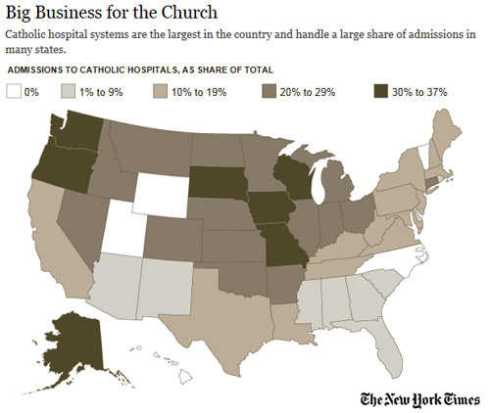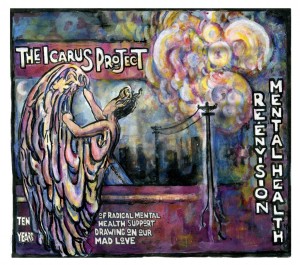I recently wrote the following in support of this Citizen’s Petition to the FDA, submitted by Wendy Kramer, the founder of the Donor Sibling Registry. The purpose of the Petition is to persuade the FDA “to look into the state of affairs surrounding the sperm donation industry, and then develop the appropriate and much needed regulation/oversight.”
I couldn’t agree more.
______________________
As a physician and donor-conceived person, I request that the Cellular, Tissue and Gene Therapies Advisory Committee convene to review the concerns addressed by Ms. Kramer in this Citizen’s Petition. Currently, donated gametes are regulated as human cell, tissue, and cellular and tissue-based products (HCT/P) by the Center for Biologics Evaluation and Research (CBER) under 21 CFR Parts 1270 and 1271.[i]
Donated gametes are fundamentally different from other HCT/Ps in that they are not being used to treat a disease – they are used to create new people. These individuals cannot possibly consent to the conditions of their own creation. Because of this unique circumstance, gamete donation must be considered separately from other HCT/Ps.
Current FDA requirements focus primarily on protecting the gamete recipients (ie., potential parents) from communicable disease. These requirements have repeatedly failed to protect the most vulnerable population – the children – from preventable adverse health outcomes that I describe below. Similar to Ms. Kramer, I focus primarily on sperm donation, though many of the concerns specified below are applicable to egg donation as well.
Hypertrophic obstructive cardiomyopathy (HOCM) is one of the most common autosomal dominant diseases with an estimated prevalence of 1 in 500.[ii] It typically presents in early to middle adulthood, and the first symptom can be sudden cardiac death in an otherwise healthy individual. Fortunately, early identification through screening of individuals known to be high risk can allow implantation of potentially life-saving automatic internal cardioverter-defibrillators (AICDs). Because there is no requirement that a record of live births be kept, there is no way to alert donor-conceived children whose genetic parent or half-sibling has been diagnosed. Far from speculative, this specific scenario has already happened and was extensively documented.[iii] As of 2009, at least one of these children has died. There is no way of knowing exactly how many children may be affected.
Additional genetic diseases transmitted to children from donor sperm, most likely unknowingly, include Autosomal Dominant Severe Congenital Neutropenia,[iv] Fragile X,[v] Long QT syndrome,[vi] and Lynch Syndrome,[vii] among others.
Excessive financial compensation has long been recognized as coercive in human subjects research. Advertising to prospective sperm and egg donors emphasizes the monetary gain from donating, providing incentive to not disclose medical history that might exclude them. One very recent, highly publicized case involved a former sperm donor who misrepresented himself as having a genius IQ and advanced degrees who was later found to have schizophrenia and a criminal record.[viii] There is currently no independent verification of personal and family medical history.
The true scope of these problems is impossible to know. Because of the following circumstances, we suspect these issues could potentially impact thousands of Americans, if not more:
- Estimates of how many children are conceived using donor sperm in the US are based on data that is almost 30 years old. In 1988, it was estimated to be 30,000 offspring/year.[ix] We have no way of knowing how many people are created through donor sperm today, but if this number is at all accurate, over one million donor-conceived people have been born since 1980.
- Frozen human sperm has been used up to 40 years after collection.[x]
- Shockingly large numbers of offspring may result from a single prolific donor. One donor has been documented as fathering over 150 individuals, but the true number of his offspring is unknown, and may be much higher.[xi]
- There is no standardized identification system for each donor, therefore one man can donate at multiple banks without disclosing this information.
- Families are not required to register live births with the sperm bank. All other registries, such as the Donor Sibling Registry, are voluntary.
In recognition of these issues, other countries have changed their policies and increased oversight. For instance, the United Kingdom limits the number of children from a single donor to 10, mandating the identity of the donor be released when children turn 18, screening for genetic disorders, and providing donors with only modest amounts of money to cover expenses.[xii]
The American Society of Reproductive Medicine (ASRM) has published a list of industry recommendations, some of which address the above issues.[xiii] This is far from adequate as the recommendations are not binding, and sperm banks in violation of these recommendations suffer no consequences from either the ASRM or the FDA. A wolf cannot guard the hen house.
The FDA must act to protect children created through the use of donor eggs and sperm. A vital first step would be a meeting of the Cellular, Tissue and Gene Therapies Advisory Committee to discuss the issues raised in this document and Ms. Kramer’s Petition.
[i] Tissue and Tissue Products, http://www.fda.gov/BiologicsBloodVaccines/TissueTissueProducts/default.htm, accessed January 15, 2017.
[ii] Shah, M. Hypertrophic cardiomyopathy. Cardiology in the Young (2017), 27(Suppl. 1), S25–S30.
[iii] Maron, B.J., et al. Implications of Hypertrophic Cardiomyopathy Transmitted by Sperm Donation. JAMA (2009), 302(15):1681-4.
[iv] Boxer, L.A., et al. Strong evidence for autosomal dominant inheritance of severe congenital neutropenia associated with ELA2 mutations. J Pediatr (2006), 148(5):633-6.
[v] Wirojanan J., et al. A girl with fragile X premutation from sperm donation. Am J Med Genet Part A (2008), 146A:888–892.
[vi] Heisel, W. Code Unknown: Trying to connect with sperm donor through online community. Center for Health Journalism, http://www.centerforhealthjournalism.org/2014/12/18/code-unknown-trying-connect-sperm-donor-through-online-community, accessed January 15, 2017.
[vii] Sperm donor with genetic illness speaks out, Copenhagen Post, http://cphpost.dk/news/national/sperm-donor-with-genetic-illness-speaks-out.html, accessed January 15, 2017.
[viii] Hauser, C. Sperm donor’s profile hid mental illness and crime, lawsuits say, New York Times, https://nyti.ms/1SMA6rx, accessed January 15, 2017.
[ix] U.S. Congress, Office of Technology Assessment, Artificial Insemination: Practice in the United States: Summary of a 1987 Survey—Background Paper, OTA-13P-BA-48 (Washington, DC: U.S. Government Printing Office, August 1988). http://www.princeton.edu/~ota/disk2/1988/8804/8804.pdf, accessed January 15, 2017.
[x] Human Fertilisation and Embryology Authority. Freezing and storing sperm, http://www.hfea.gov.uk/74.html, accessed January 15, 2017.
[xi] Mroz, J. One sperm donor, 150 offspring. New York Times, https://nyti.ms/1Axj4VZ, accessed January 15, 2017.
[xii] Human Fertilisation and Embryology Authority. HFEA agrees new policies about family donation and the number of families one donor can create, http://www.hfea.gov.uk/6518.html, accessed January 15, 2017.
[xiii] Ethics Committee of the American Society for Reproductive Medicine. Interests, obligations, and rights in gamete donation: a committee opinion, http://www.asrm.org/uploadedFiles/ASRM_Content/News_and_Publications/Ethics_Committee_Reports_and_Statements/interests_obligations_rights_of_donor.pdf, accessed January 15, 2017





